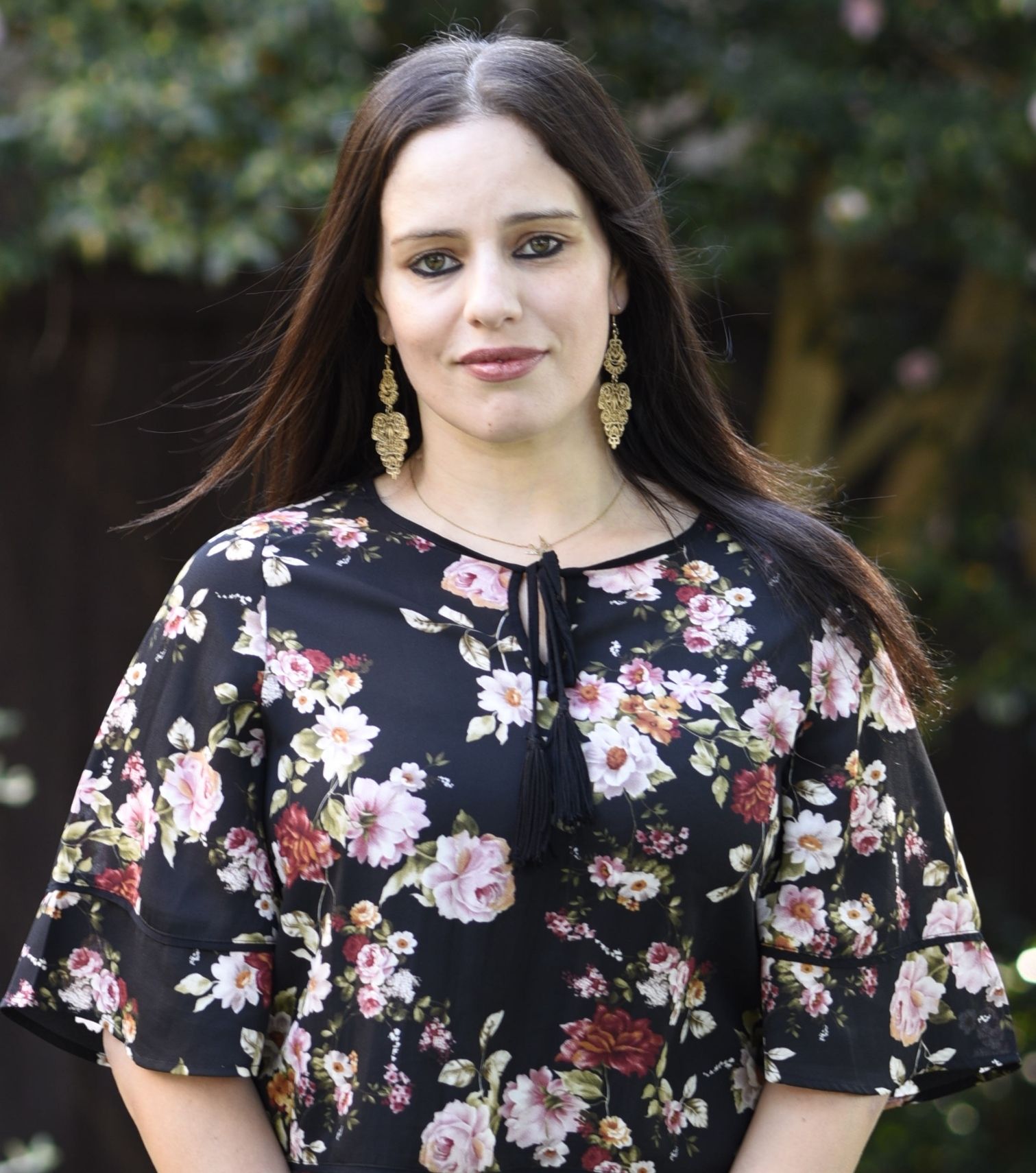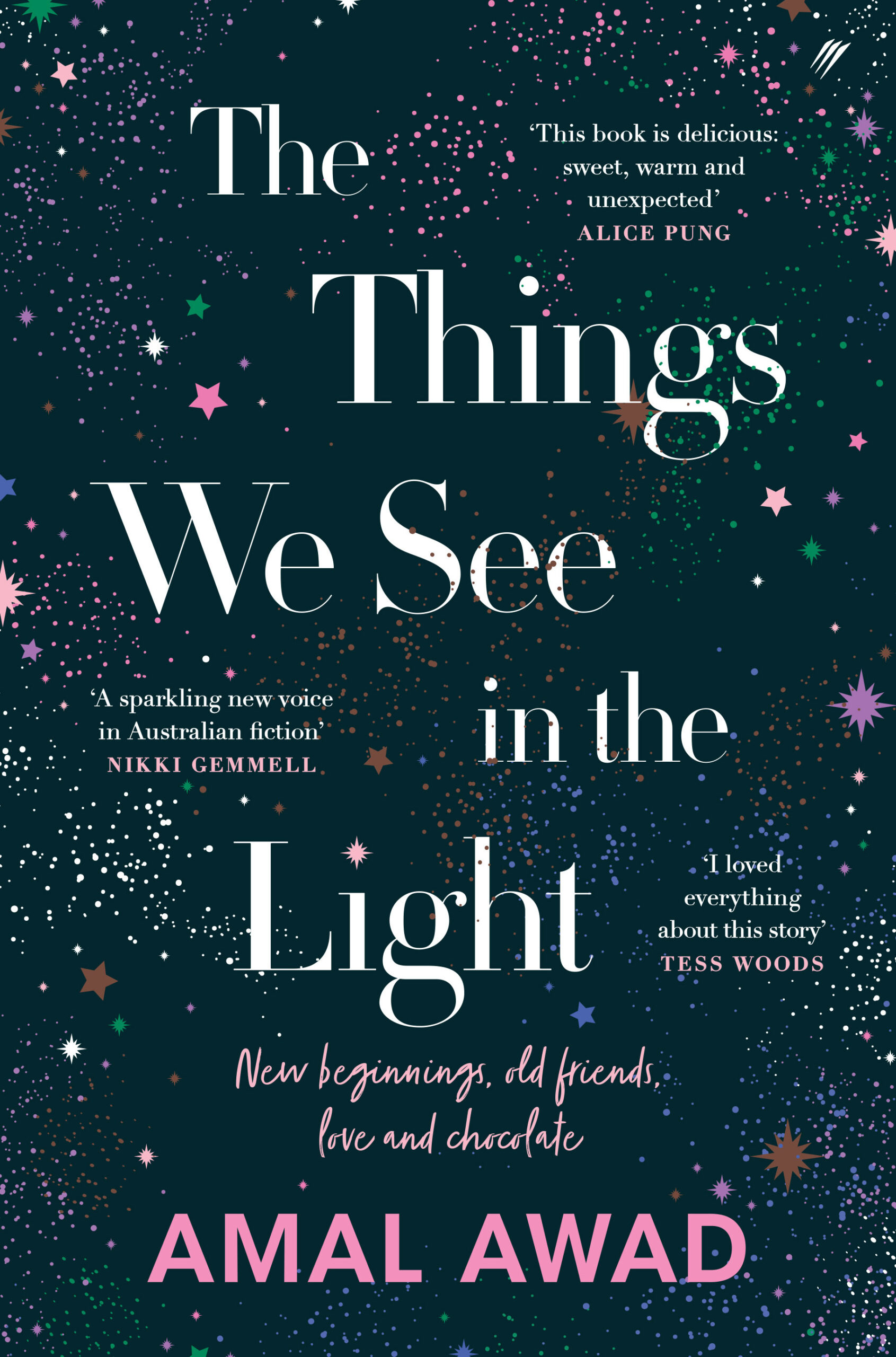
Amal Awad is a journalist, screenwriter, author and performer. She is the author of ‘Courting Samira’, ‘This Is How You Get Better’ and ‘The Things We See in the Light’ as well as the non-fiction books ‘The Incidental Muslim’, ‘Beyond Veiled Clichés: The Real Lives of Arab Women’, ‘Fridays with My Folks: Stories on Ageing’, ‘Illness and Life’, and ‘In My Past Life I Was Cleopatra’. She has also contributed to the anthologies ‘Growing Up Muslim in Australia: Coming of Age’ and ‘Some Girls Do… (My Life as a Teenager)’. You can find her online at amalawad.com.
Amal spoke with our Program and Partnership Manager, Kate, about her brilliant new book ‘The Things We See in the Light’ and all things writing Romance.
We first met in the context of your non-fiction work, and you’ve published several works that combine your personal experience with broader questions. ‘The Things We See in the Light’ feels like that as well – but just in fiction. How does the interrogation of a question work differently in fiction and why did you choose to work this question out in fiction?
This fiction book doesn’t really incorporate personal experience, but I can certainly share in the concerns of my characters to varying degrees. Like with everything I write, I am interested in exploring womanhood and connection. I am interested in unpacking how we live and why. In this book, I wanted to interrogate what it means to live authentically, and what the cost of ‘freedom’ is. Doing this in fiction breaks everything open because you really do get to move beyond your personal experiences into much larger, expansive potentials and what-ifs. It’s liberating. Even though people think novelists are secretly just trying to get away with writing their own lives, it really would be limiting. It’s inspiring to spring from some essential truths and ask bigger questions; of your characters, not yourself.
When you write non-fiction, there is a certain amount of pressure that comes with it because you have to consider that you’re sharing real-life experiences, yours and others. You have to think about accuracy and there are certain ethics you adhere to as a writer. You can still be concerned with ethics as a fiction writer, but fiction is a storytelling playground. In a way, you can be more truthful with it because it’s not real life, even if it is concerned with real life problems.
You’ve spoken before about your love of romance novels, and this is actually the third you’ve published about these three friends. What is it about romance fiction that draws you in as a reader, and what draws you in as a writer?
I think I am drawn deeply to connection in all forms. I do love a good romance, and I think how we write romance is changing, which is great: we’re not as interested in women being saved by a knight in shining armour, or the only road to fulfilment being a romantic relationship.
As a reader, I like to be moved, and a good romance can do that. It’s exciting and warming and inspiring. As a writer, I am fascinated by love, period. What is it about love that gets us? Do we even understand it? Does it overpower us too easily? Is it within us always? Are we meeting ourselves in another? Most importantly, what does love (and heartbreak) tell us about ourselves?
Stories that centre women’s experience love a bucket list – this is especially true in women’s fiction and romance novels. What is it about an Experience List that speaks to us all so deeply?
We want to live full lives. We want to be brave and free. An Experience List speaks to the unfurling of our deepest potentials. It’s discovery and recovery all at once. You didn’t miss out. You have finally arrived at the place where you get to decipher for yourself who you truly are, and what you really desire.
I’m interested in the idea of experimenting, but really what I find essential in life is experience. We grow through experiences. We come to know ourselves and, in the process, rely less on external sources of ‘happiness’. The ‘when’ of these experiences is also instructive. Why now? If I had been able to fully experience whatever I wanted when I was younger, how would that have shaped me and my perspectives? Is my life richer for the contrast of experiences I’ve had or not had?
One of the things that I really loved about this novel is your strong intent to make sure that there are no villains – no bad people, only bad situations. Why did you make this choice and was it easy to stick to?
I don’t think I set out not to write villains, but I agree that the challenges lie more in situations than specific people. Really, I just set out to write truthfully. And in truth, no one thinks they are a villain – we are always the good guy. But we have antagonists in life – either imagined or real (sometimes created). That is more interesting and believable to me than a villain or enemy who becomes defined by that role. I think you can do your main characters a disservice by making the ‘bad guy’ clear-cut. This is almost like absolving your character of their potential for genuine growth. If everything that happens to them is because they have a clear enemy, what does that mean for your character’s journey?
So, I asked instead, what antagonises Sahar? What are the worst things that can happen to her? What will prevent her from seeing the truth of who she is or who she can be? What will stop her from reaching her goals? Who are the people she would not get along with, and who has mistreated her? Ultimately, like with many of us, Sahar’s worst enemy is herself: she is her own prison guard and her own worst critic.
Finally, it is so much more interesting to me to wonder why a ‘bad guy’ is that way. You could argue that Sahar’s ex is a villain, but is he really? What informed his behaviour? And if he is villainous, what does it mean for Sahar and her potential, rather than how does she escape a “bad husband” to be “free”?
Be truthful: how much chocolate did you eat for ‘research’ during the course of writing this novel?
Ha ha, I didn’t over-indulge, but I did a chocolate tempering workshop where, to be honest, we were given way too much access to the chocolate buds used for the class. I did do a lot of research as well, which inevitably led to sweet cravings!
The ‘Things We See in the Light’ is available now, but I understand that Samira and Lara will have their own stories re-released in the next few months. Did you do much revision/revisiting of these characters and stories with the benefit of hindsight?
Yes, the first two books in the series are being re-released in November: ‘Courting Samira’ and ‘This Is How You Get Better’, which are Samira’s and Lara’s stories respectively. As they were originally self-published, they benefitted from some major revisions, and it’s been so wonderful to revisit these stories as a more experienced writer and having spent more time with them while writing ‘The Things We See in the Light’.
With Samira, I did revisit her more heavily in ‘Courting Samira’ than Lara in ‘This is How You Get Better’. This was mainly around some of the gender dynamics and how she presented herself. Lara’s story really needed more structural work than character revision. I’ve had many more years of experience in storytelling since writing those novels, so that certainly informed the process. They needed a good edit, and with my publisher’s amazing team, I think we gave them that.
Finally, what are you working on now?
I am working on a new novel, again with Pantera Press, with the working title ‘Come to Me in My Dreams’. I am also involved in various screenwriting projects and have a lo-fi podcast called Creative Confessionals, which allows me to talk about the joys and challenges of being a creative. There are interviews with some amazing artists and writers, and I also talk a bit about writing books and the publishing process.

